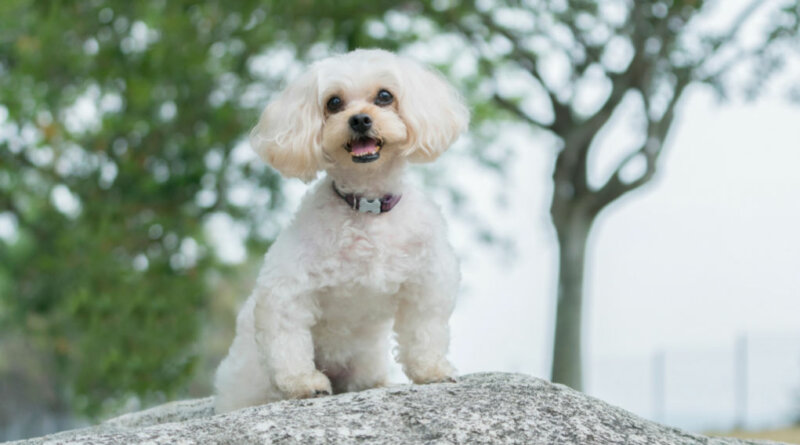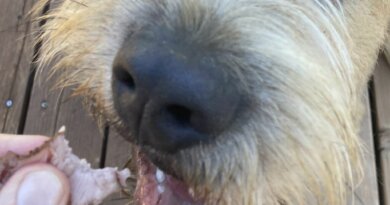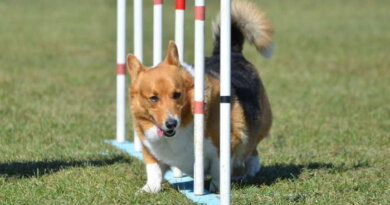Shih Poo Dog Breed Profile – Top Dog Tips
A Shih-Poo is a mixed breed dog that combines the Toy Poodle with a Shih Tzu. This small, hypoallergenic, and snuggly companion inherits plenty of the best qualities from both parents.
A Shih-Poo also goes by the name Poos hi or Shoodle. Despite being designated as a designer breed, these dogs are typically available in rescues and shelters.
Although the Shih-Poo is a beautiful companion animal for virtually everyone, a retired senior would be an ideal match for this breed.
These dogs love being doted on, loved, and pampered. This crossbreed dog is generally versatile and will thrive in many different environments.
The Shih-Poo enjoys living in a tiny house with lots of property, an apartment, or a fenced-in family home. Whether your pet lives with a single person or in a family home, make sure the Shih-Poo receives lots of attention and love.
The Shih-Poo should never be left outside and will require regular visits to the vet for checkups, teeth cleaning, and grooming. Unfortunately, for pups inheriting their parent’s stubbornness and territorial marking, frequent potty breaks are required.
Shih-Poo History
This breed is a relatively new designer dog, initially developed in North America. The Poodle lineage started in Germany, with the Shih Tzu parent coming from Chinese Royalty.
The regal DNA will be apparent if the mixed breed holds characteristics from the Shih Tzu.
The Shih-Poo comes from the loyal and adorable breed, the Shih Tzu. They also get their sophisticated intelligence from the Poodle.
This breed is ideal for anyone wanting a hypoallergenic companion animal to love and spoil. These dogs are classified as mix-breed dogs, so they’re not acknowledged as an official breed now.
The Size of a Shih-Poo
While the Shih-Poo is considered a relatively new breed, the dog’s size is still largely unknown. As an equal mix of Toy Poodle and Shih-Tzu, you can predict the Shih-Poo to remain on the smaller side.
Most dogs weigh between 8 to 18 pounds. They range in height from 8 to 18 inches tall.
As both Poodles and Shih Tzus can have significantly varying sizes (between teacup, miniature, and standard sizing), the size of the Shih-Poo will also change.
Understanding the Shih-Poo Mixed Dog Breed
This reed will inherit personality characteristics from both parent breeds. Let’s look at the parent breeds to develop a solid understanding of this dog’s traits.
The Shih-Poo Personality
This breed is known for its stubborn personality, making them slightly challenging to train. This mixed dog breed may lack in trainability, but the Shih Poo will always make up for in character.
This dog is ridiculously friendly, cute, and attentive. Likewise, Poodles are known for their trainable, brilliant nature. The Poodle is also highly active.
The Shih-Poo personality can vary but typically falls in the middle of all parental traits. Many Shih-Poos are friendly and playful, with moderate exercise requirements.
Their small size makes them a wonderful lap dog, enjoying a nap on your lap or beside you for hours at a time. Although the Shih-Poo loves to snuggle, they also enjoy walks and playing.
This breed may not be eager to learn new tricks. Still, they enjoy interacting with their family members and getting attention.
Thankfully, most Shih-Poos aren’t as vocal as their Poodle parent but will frequently alert you to displeasures around the house (like a missed meal) with a single bark until their needs are met.
Training and socialization should be established early on, with consistency and positive reinforcement being the way to go.
The Health of the Shih-Poo Breed
Although many designer crossbreeds’ health has dramatically improved a dog’s overall health, the pup can still inherit health conditions their parents are prone to.
Shih-Poos typically live approximately 16 years on average, most of the time in excellent health.
Dental problems are prevalent in the Shih-Poo, making prevention essential for overall health and wellness.
This dog can also have issues with their skin and eyes. Unfortunately, Shih-Poos are predisposed to a few health issues, including:
Hypothyroidism
Hypothyroidism is typically caused by one of two conditions: idiopathic thyroid gland atrophy and lymphocytic thyroiditis.
The latter is considered the most common cause of hypothyroidism, believed to be an immune-mediated disease.
Essentially, the immune system decides that the thyroid is foreign and attacks it. Unfortunately, this trait is hereditary, meaning the Shih-Poo’s parents play a vital determining factor.
The most common symptoms associated with hypothyroidism include:
- Weight gain without an increase in appetite
- Cold intolerance
- Very thin to nearly bald coat
- Increased dark pigmentation in the skin
- Slow heart rate
- Failure to re-grow hair after shaving or clipping.
All cases of hypothyroidism are treatable but not curable. Treatment includes the administration of thyroid replacement hormone. This medication is given for the rest of the dog’s life.
Patellar Luxation
This condition is exceptionally prevalent in small breed dogs as one of the significant causes of hindlimb lameness and early osteoarthritis development.
Patellar luxation refers to a kneecap that is out of place, giving the dog a skip or lameness in one leg. As quickly as the lameness starts, the dog returns to using all four legs.
Early diagnosis is critical in preventing further disease development, including secondary joint changes.
Long-term health implications will depend on the grate of luxation and whether both hindlegs are impacted. These injuries are graded from Grade I-IV.
Grade I patellar luxations aren’t typically repaired, but grades II-IV are. Many dogs can tolerate this condition for years.
If your dog has recurrent or ongoing lameness, surgery should be performed. When the veterinarian performs the surgery before arthritis or injury, the Shih-Poo should regain full use of the leg.
Renal Dysplasia
This hereditary disease is characterized by abnormal differentiation of renal tissue. This condition is diagnosed in young dogs with abnormal kidneys.
The situation is first recognized by owners, often with excessive thirst or urination. Typically, the disease starts as idiopathic (no known cause).
Currently, no treatment is available for renal dysplasia, a progressive condition. Dietary and therapeutic management can improve the quality of life for these Shih-Poos.
Symptoms of renal dysplasia include stunted growth, increased urination, and increased thirst. The condition can present as mild, moderate, and severe.
A severe form presents in very young puppies, with most dogs not surviving the past six months.
Von Willebrand’s Disease
This condition is the most common bleeding disorder in dogs, inherited at birth by one of the parents. It is caused by deficiencies in the number of specific proteins needed to help platelets stick together and for clot development.
Many dogs with Von Willebrand’s Disease will never show outward symptoms of this disease. Occasionally, the dog may experience spontaneous bleeding from the bladder, oral mucous membranes, vagina, or nose.
Prolonged bleeding after surgery or trauma is a common clinical finding. A screening test may be performed to determine the exact amount of von Willebrand factor in the blood.
In emergency situations, blood transfusions or fresh frozen plasma can stabilize a bleeding patient. The veterinarian may treat the dog donating blood with DDAVP before blood collection.
The DDAVP will raise the level of von Willebrand factor in the donor’s blood – an immediate benefit for dogs with vWD.
Intervertebral Disk Disease
This condition is one of the dogs’ most found neurologic disorders, often leaving terror and heartbreak for afflicted dogs and owners.
Symptoms of this condition include pain in the neck or back region, difficulty urinating or defecating, shaking or trembling, or an unwillingness to walk.
Generally, treatment is required early to combat IVDD, often through surgery.
IVDD must be diagnosed by a veterinarian, typically with a physical exam. Once confirmed, the veterinarian will determine the severity.
Your dog will often begin conservative treatment to try and prevent further damage without surgery. The treatment may also include x-ray imaging in preparation for surgical intervention.
Cleft Palate
This condition is relatively common, caused by the failure of the roof of the mouth to close during normal embryological development.
As a result, your dog will have an oral cavity that communicates with its nasal passages. This may cause issues with eating, swallowing, getting enough nutrition, and respiratory implications.
The classic symptom of the cleft palate is a hole in the roof of the mouth. The cavity may be smaller or larger, varying in location.
Treatment will depend on the size and location of the defect, particularly the degree to which the affected puppy is affected. Most are identifiable at birth.
Sadly, many cleft palate puppies are euthanized immediately after defects are detected. If handled sufficiently, many of these puppies will survive.
Finally, the Shih-Tzu holds a short snout that can give the Shih-Poo breathing issues. Many of these issues are alleviated if the dog inherits a longer snout from the Poodle.
Pay careful attention to signs of heat stroke if your dog happens to have a shorter nose.
Care of Your Shih-Poo
All dogs should regularly attend the veterinarian for checkups. Regular checkups will help detect health conditions or concerns early.
Likewise, your vet can help you develop a care routine for your dog to keep it healthy long-term.
Make sure all Shih-Poo’s are kept on a regular dietary schedule. Avoid free-feeding your Shih-Poo, as most will overeat and rapidly gain weight.
Your dog will need frequent potty breaks and regular walks to ensure optimal health.
Dental issues are also problematic for the Shih-Poo. Regular teeth cleanings are essential, along with systematic dental chews and brushing.
Finally, a Shih-Poo’s ears should always be kept clean and dry. After bathing, try to dry the dog’s ears thoroughly.
Your dog may have an ear infection if you notice a smell or pungent odor.
Shih-Poo Diet and Feeding
The ideal Shih-Poo diet is one formulated for small breed dogs. Always choose high-quality food for your dog, as this breed is known for dental issues.
Avoid filler ingredients in the product whenever possible. The Shih-Poo will frequently overeat, leading to obesity if food is left out.
Make sure your Shih-Poo is kept on a feeding schedule with a minimum number of treats.
The Shih-Poo’s dietary needs will change as they shift from puppyhood to adulthood, continuing to change into their senior years.
Ask your veterinarian for a recommendation on high-quality foods for your Shih-Poo diet.
Coat Color and Grooming Requirements
Shih-Poo coats will always vary, depending on the genetic influence.
This breed can get curly fur from the Poodle parent or straight fur from the Shih-Tzu parent. Additionally, they can hold a combination of the two, which is most likely.
The color combinations will vary, with coats coming in white, brown, black, brindle, and all other variations and combinations.
Daily brushings and monthly grooming will likely keep your pup looking and feeling their best.
Additionally, your dog may need the occasional bath between grooming, likely weekly (as their skin will probably become irritated and dry).
Shih Poo With Children and Other Pets
As the Shih-Poo is a small breed dog, the dog can quickly become injured by excited small children.
The Shih-Poo prefers to be around adults and older children who know how to play gently. Children who learn to approach and play with small dogs properly can also make fabulous companions.
The Shih-Poo can get along with other animals if introduced slowly and calmly. Early socialization will help the process go smoothly.
It’s best if they get used to other pets early on. It’s important to remember that Shih-Poos should only be left alone for short periods, although a second dog would be ideal.
Shih Poo Dog Breed Final Thoughts
The Shih-Poo is a small breed dog with a sweet disposition and loving personality. The designer breed mixes the Toy Poodle and the Shih Tzu.
This dog is a hypoallergenic, small, and cuddly companion, ideal for virtually any environment.
Although this dog does well for adults and older children, owners should closely supervise small children.
This breed gets along well with other animals in the home, provided early socialization occurs.
Always watch the puppy until you know how your Shih-Poo will interact with other animals. The Shih-Poo is perfect for experienced dog owners and novice ones alike.
If you’re looking for an adorable crossbreed dog as an addition to your home, you can definitely consider getting a Shih Poo!
READ NEXT: Morkie Dog Breed Profile
Related










All trends of medicament. Medscape Drugs & Diseases.
medicine amoxicillin 500mg
Some are medicines that help people when doctors prescribe. Read here.Amox
drug markets dark web darknet websites
dark web market list dark website
dark market 2023 tor markets links
darknet search engine darknet market links bitcoin dark web